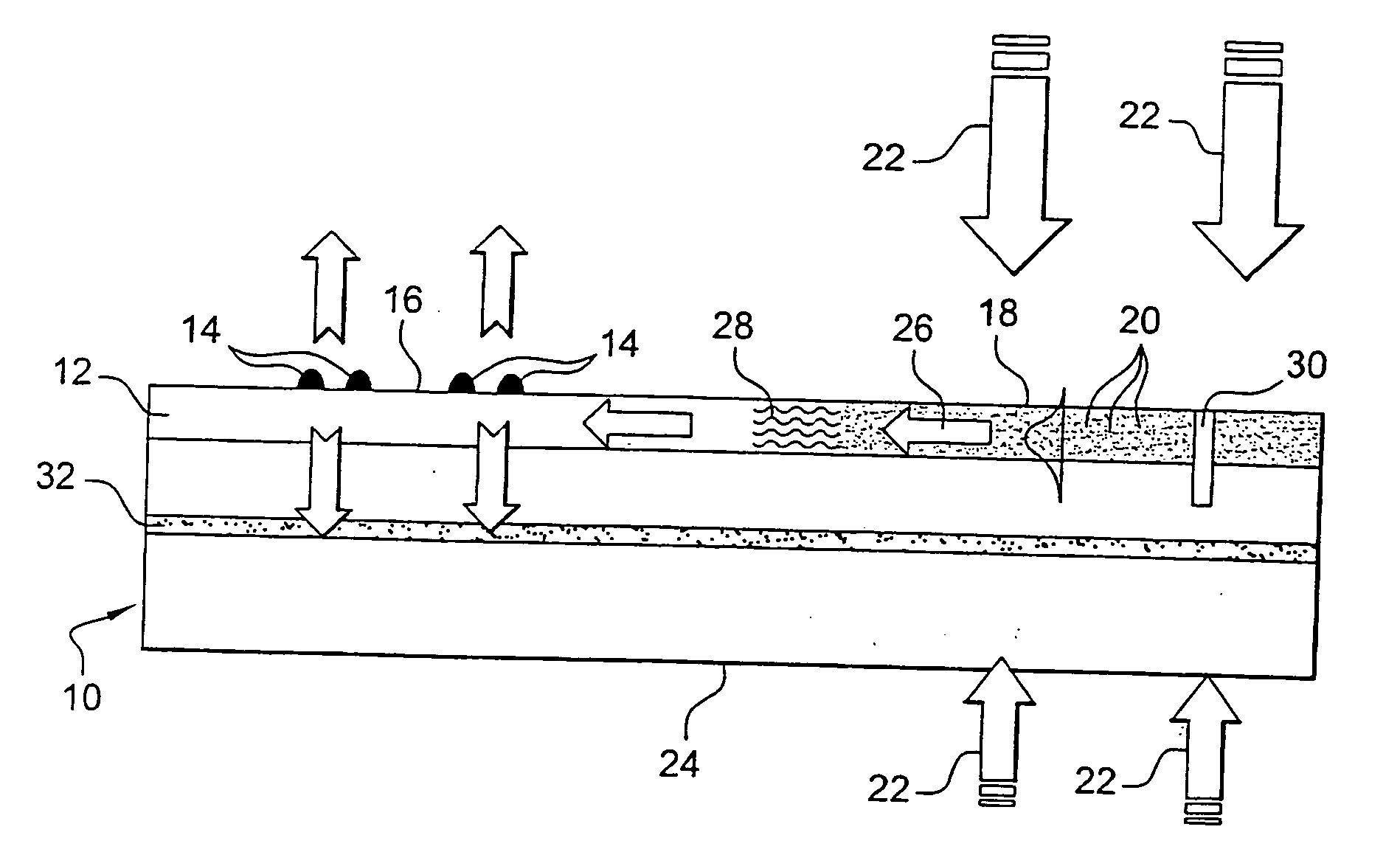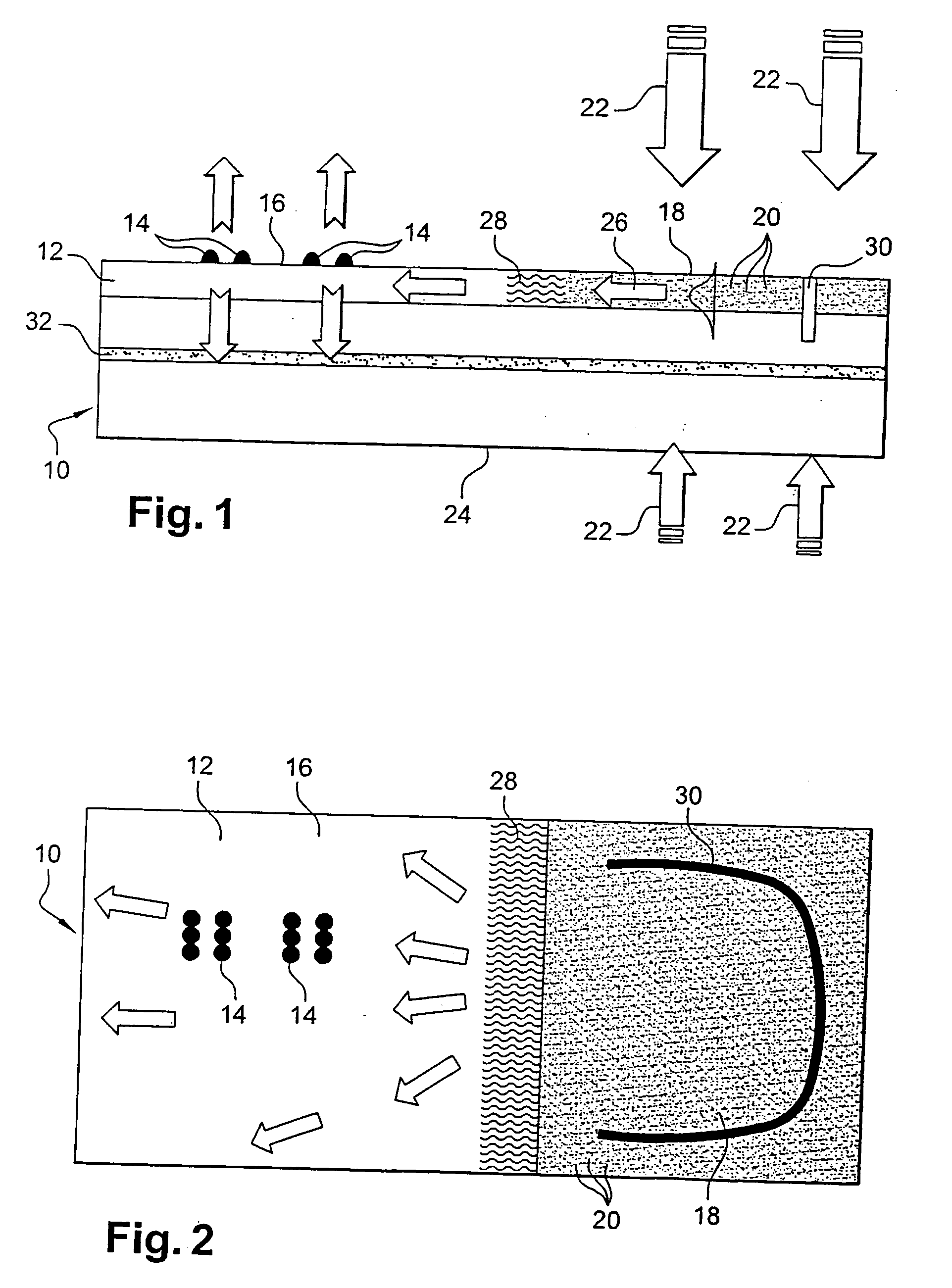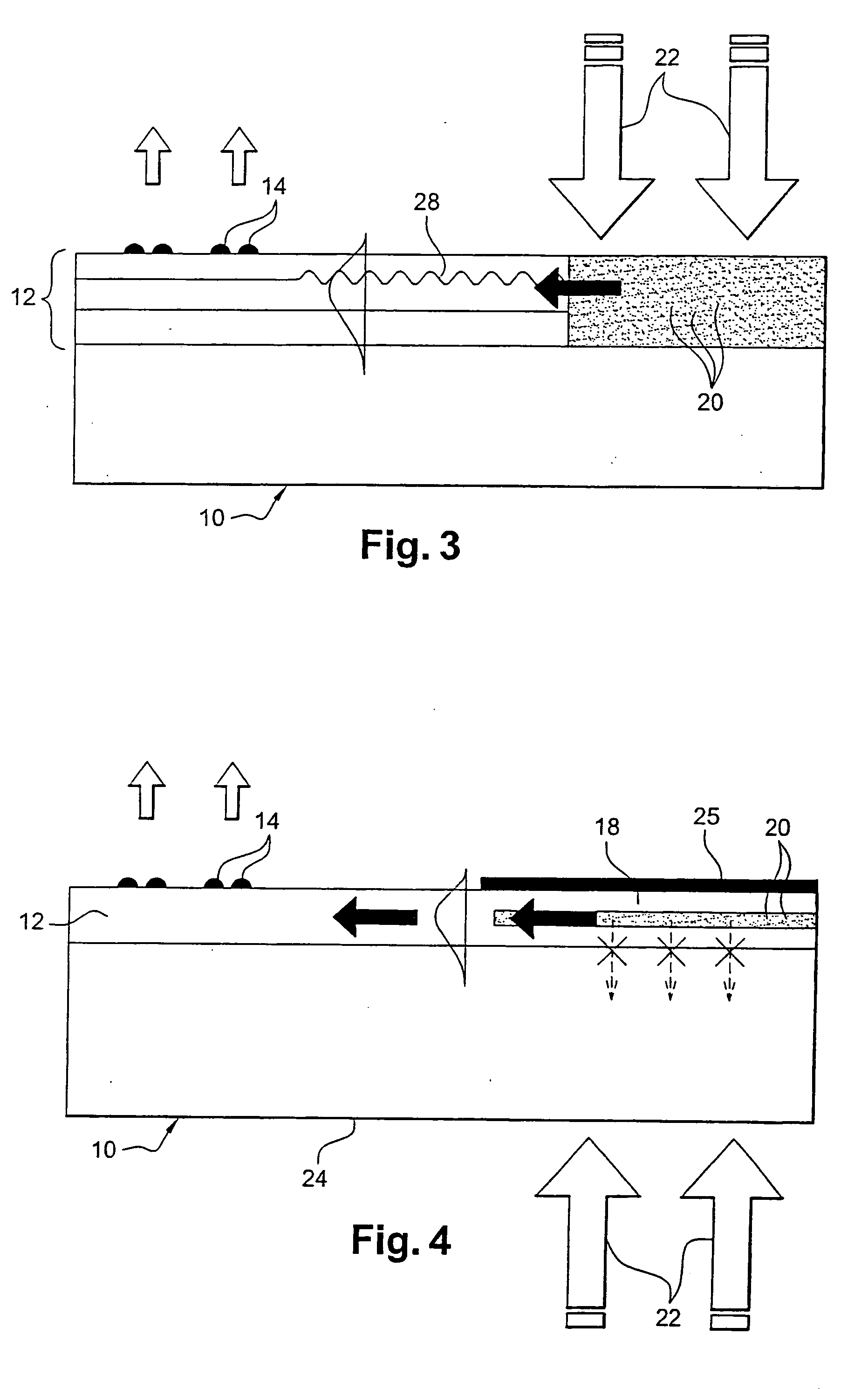Device for supporting chromophore elements
a technology of chromophore elements and devices, applied in the direction of optical elements, fluorescence/phosphorescence, instruments, etc., can solve the problems of considerable difficulties in coupling excitation light into the guiding layer of the substrate, and achieve the effect of improving the signal-to-noise ratio
- Summary
- Abstract
- Description
- Claims
- Application Information
AI Technical Summary
Benefits of technology
Problems solved by technology
Method used
Image
Examples
Embodiment Construction
[0047] The device shown in FIGS. 1 and 2 comprises a substrate 10 of conventional type having a top layer 12 for carrying chromophore elements 14 on a portion 16 of its surface, which layer is made of a material having a high refractive index, e.g. greater than about 1.6, and forms a planar waveguide.
[0048] A portion 18 of this layer 12, adjacent to the portion 16 for carrying the chromophore elements 14, contains photoluminescent constituents 20 which emit luminescence in guided mode in the layer 12 on being excited by primary excitation light 22 directly illuminating either the portion 18 of the layer 12 containing the photoluminescent constituents 20, or the opposite face 24 of the substrate 10, as shown diagrammatically in FIG. 1.
[0049] The photoluminescent components 20 are selected, on being excited by the light 22, to emit luminescence at the excitation wavelengths for the chromophore elements 14. The chromophore elements are then excited by the evanescent portion of the gu...
PUM
 Login to View More
Login to View More Abstract
Description
Claims
Application Information
 Login to View More
Login to View More - R&D
- Intellectual Property
- Life Sciences
- Materials
- Tech Scout
- Unparalleled Data Quality
- Higher Quality Content
- 60% Fewer Hallucinations
Browse by: Latest US Patents, China's latest patents, Technical Efficacy Thesaurus, Application Domain, Technology Topic, Popular Technical Reports.
© 2025 PatSnap. All rights reserved.Legal|Privacy policy|Modern Slavery Act Transparency Statement|Sitemap|About US| Contact US: help@patsnap.com



